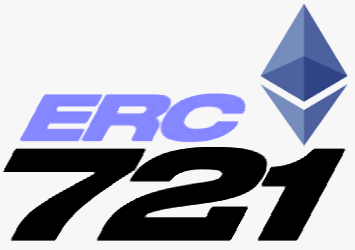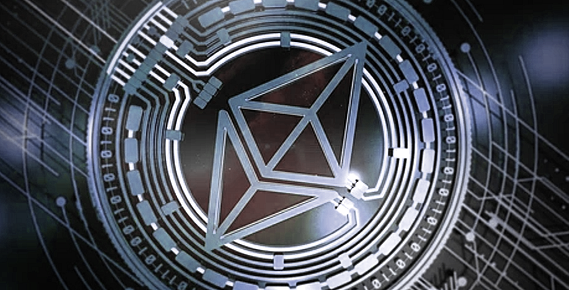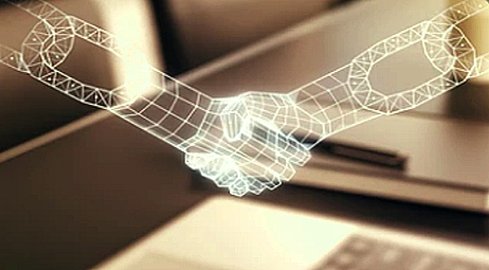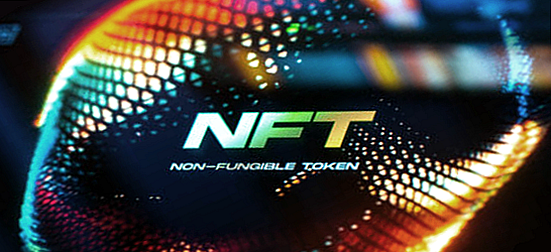Accredited InvestorsAltcoinAnatoli UnitskyAnti-Money Laundering (AML) In CryptoAPIArbitrageArtCoin TokenArticle DirectoryASICAuction Terminology GlossaryBasics of Stock Market InvestingBear MarketBest Crypto Payment Provider In the WorldBitcoinBlockchainBlockchain ConfirmationBlockchain Consensus MechanismBlockchain ForkBlockchain GlossaryBored Ape Yacht ClubBuild a Business That OutperformsBull MarketBuying SkyWay SharesByzantine Fault Tolerance (BFT) ExplainedCasascius CoinCentral Bank Digital Currency (CBDC)Centralized Crypto ExchangeCoinCoinsetCold WalletCollateralCommodity Futures Trading Commission (CFTC)Cross-Chain TechnologyCRUCrypto ExchangeCrypto GlossaryCrypto JokesCrypto Terms to KnowCrypto TickerCryptocurrencyCryptographyCryptojackingCryptounit BlockchainCryptounit GlossaryCryptounit ProgramdApp (Decentralized Application)Dead CoinDecentralized Exchange (DEX)Decentralized Finance (DeFi)Difference Between Bitcoin and EthereumDifferent Ways of Investing MoneyDigital CurrencyDistributed LedgerDo Your Own Research (DYOR)Dollar Cost Averaging (DCA)Dow Jones Industrial Average (DJIA)EncryptionERC-20ERC-721EthereumEvoScentFear Of Missing Out (FOMO)Fear, Uncertainty and Doubt (FUD)Fiat MoneyFNT Fintech CompanyGenesis BlockGlobal Unit PayGlossary of Banking TermsGlossary of Business TermsGlossary of Financial TermsHalvingHODLHot WalletHow Do I Start InvestingHow Rich is Satoshi Nakamoto?How to Create a BlockchainHow to Find Private InvestorsHow to Get Into FintechHow to Program Smart ContractsI Am Thrilled to Be a Part of This Global ProjectInitial Coin Offering (ICO)Initial Public Offering (IPO)Initial Token Offering (ITO)Innovation Basalt TechnologyInnovative Transportation TechnologiesInternational Bank Account Number (IBAN)Investing in Gold Mining StocksInvesting in Gold MiningJagerJoy of Missing Out (JOMO)Know Your Customer (KYC)LedgerLiquidity in CryptocurrencyMaker and Taker Fees in Crypto TradingMarket Capitalization (Market Cap)Meme CoinMetal Credit CardMetaMaskMillenials Now Have Access to Generational WealthMy Best Investment EverNew Digital EvolutionNFT GlossaryOff-Chain TransactionsOn-Chain TransactionsOpen Edition NFTPeer-to-Peer (P2P)Personal Loan GlossaryProbably the Best STO on the MarketProof of Stake (PoS)Real Estate Glossary of TermsReal Estate Investing GlossaryRebase TokenSecurities and Exchange Commission (SEC)Security Token ExchangesSecurity Token Offering (STO)Soulbound Decentralized Identities for Security TokensSoulbound ID Launch by Stobox Proves a SuccessSoulbound TokensStoboxStock Market GlossaryTestimonialsTether Platform and Token (USDT)UnitEx ExchangeUnitsky String TechnologiesUNTBUSDUValidatorWe Started Investing When We Were 25What are Blue Chip NFT?What are Blue Chip Stocks?What are Crypto Assets?What are Crypto Smart Contracts?What are CryptoPunks NFT?What are Digital Assets?What are Digital Collectibles?What are Gas Fees?What are Gas Wars?What are Hashmasks?What are Non Fungible Tokens?What are Non-Sufficient Funds (NSF)?What are Soulbound Tokens (SBT)?What are Stablecoins in Crypto?What are Transactions Per Second (TPS)?What are Utility NFTs?What are Utility Tokens?What Does Burning Crypto Mean?What Does Diamond Hands Mean?What Does Paper Hands Mean?What Does To The Moon Mean?What Does WAGMI Mean?What Happened to Satoshi Nakamoto?What is a 51% Attack?What is a Baby Boomer?What is a Backlink?What is a Banner?What is a Barcode?What is a Bid-Ask Spread in Crypto?What is a Block in Blockchain?What is a Block Reward?What is a Blockchain Address?What is a Blockchain Node?What is a Blockchain Oracle?What is a Blog?What is a Bond?What is a Bot?What is a Broker?What is a Business Accelerator?What is a Cash Cow?What is a Commercial Bank?What is a Commodity?What is a Con?What is a Credit?What is a Credit Limit?What is a Credit Rating?What is a Crypto Airdrop?What is a Crypto Bridge?What is a Crypto Scam?What is a Crypto Token?What is a Crypto Wallet?What is a Crypto Whale?What is a Crypto Winter?What is a Cryptocurrency Public Ledger?What is a Cryptocurrency Roadmap?What is a DAO?What is a Dark Pool?What is a Day Trader?What is a Dead Cat Bounce?What is a Default?What is a Derivative?What is a Digital Credit Card?What is a Fiscal Quarter?What is a Fungible Token?What is a Governance Token?What is a Grace Period?What is a Hard Fork?What is a Hot Wallet?What is a Hybrid Blockchain?What is a Hybrid PoW/PoS?What is a Joint Account?What is a Market Cap?What is a Merkle Tree in Blockchain?What is a Mining Farm?What is a Nonce? What is a PFP NFT?What is a POS System?What is a Prepaid Card?What is a Private Blockchain?What is a Private Key?What is a Public Blockchain?What is a Public Key?What is a Reserve Currency?What is a Ring Signature?What is a Routing Number?What is a Rug Pull in Crypto?What is a Safe Deposit Box?What is a Satoshi?What is a Security Token?What is a Seed Phrase?What is a Shitcoin?What is a Sidechain?What is a Soft Fork?What is a Spot Market?What is a State Bank?What is a SWIFT Code?What is a Tax Identification Number (TIN)?What is a Time Deposit?What is a Transaction Account?What is a Variable Interest Rate?What is a Virtual Assistant (VA)?What is a Virtual Card?What is a Virtual Currency?What is a Visa Card?What is a Whitelist in Crypto?What is a Whitepaper?What is Accounts Payable (AP)?What is AMA in Crypto?What is Amortization?What is an Accrual?What is an ACH Transfer?What is an Actuary?What is an Addendum?What is an Algorithm?What is an Angel Investor?What is an Annuity?What is an Asset?What is an ATM?What is an Atomic Swap?What is an Audit?What is an Avatar?What is an EIN?What is an Embargo?What is an Entrepreneur?What is an IDO (Initial Dex Offering)?What is an Interest Rate?What is an Internet cookie?What is an Investment Bank?What is an NFT Drop?What is an NFT Floor Price?What is an Ommer Block?What is an Orphan Block?What is an Outstanding Check?What is an Overdraft?What is Artificial Intelligence (AI)?What is B2B (Business-to-Business)?What is B2G (Business-to-Government)?What is Bartering?What is Bitcoin Dominance?What is Bitcoin Pizza Day?What is Blockchain Immutability?What is Blockchain Used For?What is BRICS?What is Business-to-Consumer (B2C)?What is C2C (Customer to Customer)?What is Capitalism?What is Catfishing?What is CFD Trading?What is Check Kiting?What is Cloud Mining?What is Communism?What is Content Marketing?What is Decentralization in Blockchain?What is DeFi in Crypto?What is Delisting?What is Depreciation?What is Digital Marketing?What is Diversification?What is Double Spending?What is Dumb Money?What is Dumping?What is Earnings Per Share (EPS)?What is Economics?What is Email Marketing?What is Equity?What is Etherscan?What is Fintech?What is Foreign currency?What is Forex?What is Fundamental Analysis (FA)?What is GameFi?What is Generative Art NFT?What is Gwei?What is Hard Currency?What is Hash Rate?What is Hashing in Blockchain?What is Inflation?What is Initial Game Offering (IGO)?What is Interest?What is Interest Income?What is Mainnet?What is Mastercard?What is Metaverse in Crypto?What is Mining in Cryptocurrency?What is Minting NFT?What is Mobile Banking?What is Money Laundering?What is NFT Alpha?What is NFT Metadata?What is NFT Rarity?What is NGMI Meaning?What is Nominal Interest Rate?What is Online Banking?What is Open-End Credit?What is OpenSea NFT Marketplace?What is Personal Identification Number (PIN)?What is Play-to-Earn?What is Polygon?What is Proof of Authority (PoA)?What is Proof of Work (PoW)?What is Public Key Cryptography?What is Pump and Dump?What is Quantum Computing?What is Refinancing?What is Retail Banking?What is Ripple?What is Sharding?What is Slippage in Crypto?What is Smart Money?What is Solvency?What is Soulbound ID?What is SSL?What is Staking in Cryptocurrency?What is Technical Analysis (TA)?What is Testnet?What is the Ask Price?What is the Better Business Bureau (BBB)?What is the Bid Price?What is the Dark Web?What is the InterPlanetary File System (IPFS)?What is the Gold Standard?What is the Lightning Network?What is the Prime Rate?What is the Sandbox?What is the Secondary Market?What is the World Bank?What is Tier 1 Capital?What is Tokenomics?What is TRC-20?What is Universal Banking?What is Unspent Transaction Output (UTXO)?What is Usury?What is Volatility in Crypto?What is Wash Trading?What is Web3?What is Whisper?What is XRP?What is Zero-Knowledge Proof (ZKP)?Who is Beeple?Who is Satoshi Nakamoto?Who is Vitalik Buterin?Why Tokenization is a Safe HavenWhy You Should Try Your Hand at Trading
ERC-721
- Home
- Blockchain Glossary
- ERC-721
The year 2017 saw the emergence of ERC-20, which became the Ethereum token standard and paved the way for a plethora of ICOs. Fast forward to today, ERC-721 has taken center stage by launching countless non-fungible tokens (NFTs).

Initially overshadowed by its more popular counterpart, ERC-20, ERC-721 has now solidified its position as a cornerstone of the Ethereum ecosystem, serving as the foundation for NFTs worth billions of dollars.
What is ERC-721?
ERC-721 is a token standard on the Ethereum blockchain that enables the creation of unique, non-fungible tokens (NFTs). Unlike fungible tokens, such as cryptocurrencies, which are interchangeable and have the same value, each ERC-721 token is distinct and unique. This uniqueness is achieved by assigning a specific identifier to each token, which is stored on the Ethereum blockchain.
One of the primary use cases for ERC-721 tokens is the creation of digital collectibles, such as artwork, gaming items, and virtual real estate. These collectibles can be bought, sold, and traded on various marketplaces and platforms, with ownership and provenance tracked on the blockchain. This makes ERC-721 tokens valuable for creators and collectors alike, as they provide a secure and transparent way to verify ownership and transfer ownership without the need for intermediaries.
ERC-721 tokens are built on top of the Ethereum platform, which means that they benefit from the platform's robust infrastructure, security, and decentralization. They also share many of the same features as other Ethereum-based tokens, such as the ability to program them with smart contracts and interact with them using decentralized applications (dApps).
ERC-721 tokens are distinct from ERC-20 tokens, which are the most widely used token standard on the Ethereum blockchain. ERC-20 tokens are fungible and interchangeable, meaning that each token is the same as every other token of the same type. This makes them ideal for use cases such as cryptocurrencies, where each unit of currency has the same value.
In contrast, ERC-721 tokens are unique and non-interchangeable, which makes them ideal for use cases where each item or asset has a distinct value or identity. They are also more complex than ERC-20 tokens, as they require additional functions to manage ownership and transfers.
Overall, ERC-721 tokens provide a powerful tool for creators, developers, and collectors who are looking to create and trade unique digital assets. As the popularity of NFTs continues to grow, it's likely that we will see even more innovative use cases for ERC-721 tokens in the future.
How are ERC-721 NFTs produced?
ERC-721 tokens are produced by developers who create smart contracts on the Ethereum blockchain. These smart contracts define the rules and functions of the token, including its ownership, transfer, and other properties. The smart contract for an ERC-721 token specifies the unique identifier or token ID, which is used to distinguish each token from all others on the blockchain.
The creation of an ERC-721 NFT begins with the deployment of a smart contract to the Ethereum network. The smart contract contains a set of rules that define the properties of the NFT, such as its name, symbol, and total supply. The developer can also include additional features, such as royalties, which allow them to receive a percentage of any future sales of the NFT.
Once the smart contract is deployed, the developer can begin minting new tokens by calling the "mint" function in the smart contract. This function assigns a new, unique token ID to each newly created NFT. The token ID is a non-repeating, 256-bit number that is generated by the Ethereum blockchain.
After minting, the NFTs can be transferred to other Ethereum addresses. The transfer function in the smart contract is responsible for updating the ownership of the NFT and transferring it from one address to another. The transfer function can be called by the owner of the NFT or by an approved third-party, such as a marketplace or exchange.
ERC-721 tokens can also be burned or destroyed, which removes them from circulation. The burn function in the smart contract removes the NFT from the blockchain, which means that it can no longer be transferred or owned by anyone.
One of the key benefits of ERC-721 tokens is their ability to be easily interoperable with other platforms and applications. Because ERC-721 tokens are built on the Ethereum blockchain, they can be used on any platform or application that supports the Ethereum network. This means that developers can create NFTs that can be used across multiple marketplaces and applications, increasing their value and versatility.
In conclusion, ERC-721 NFTs are produced through the creation of smart contracts on the Ethereum blockchain. These smart contracts define the rules and properties of the NFTs, including their ownership, transfer, and unique identifier. Once minted, ERC-721 NFTs can be transferred, burned, or used on any platform or application that supports the Ethereum network.
Related Articles

Ethereum
Ethereum was created with the goal of being scalable, programmable, secure, and decentralized. It is the blockchain of choice for developers and businesses developing technologies based...

ERC-20
In 2015, the popularity of smart contracts was on the rise, but some challenges remained unresolved. With anyone able to create tokens, a large number were being generated. However, there was no standard method for ensuring that these various tokens could be created, utilized, and...

What are Crypto Smart Contracts?
Smart contracts operate in the background of many consumer crypto products, so if you're doing anything other than buying and holding cryptocurrencies, you've probably...

dApp
dApps are stored and executed on a blockchain system, usually Ethereum, and their validation is carried out using cryptographic tokens.

What are Non Fungible Tokens?
Non fungible tokens (NFTs) are cryptographic tokens that represent a unique digital or physical asset. Within a blockchain network, they serve as verifiable proofs of...
- Home
- Blockchain Glossary
- ERC-721